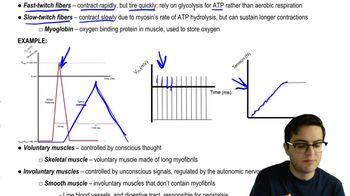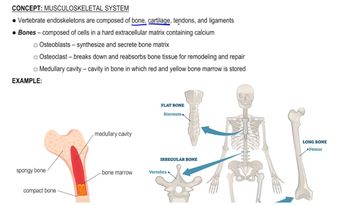47. Muscle Systems
Musculoskeletal System
Learn with other creators
Practice this topic
- Multiple ChoiceWhat type of muscle is striated with intercalated disks?1171views
- Multiple ChoiceWhich statement about muscle contraction is correct?1154views
- Multiple ChoiceWhat do all muscle tissues have in common?1682views
- Multiple ChoiceWhy is having a hydrostatic skeleton rather than an internal skeleton advantageous to an earthworm?1217views
- Textbook Question
Complete this concept map on animal movement.
1266views - Textbook Question
Which of the following statements regarding control of muscle tissue is/are correct? Select True or False for each statement.
T/F All skeletal muscles are voluntary.
T/F Cardiac muscle is involuntary.
T/F Some smooth muscle tissues are voluntary, and others are involuntary.
T/F Parasympathetic and sympathetic neurons innervate skeletal, cardiac, and smooth muscle tissues.
819views - Textbook Question
A human's internal organs are protected mainly by the
a. Hydrostatic skeleton.
b. Axial skeleton.
c. Exoskeleton.
d. Appendicular skeleton.
1663views - Textbook Question
In muscle cells, myosin molecules continue moving along actin molecules as long as:
a. ATP is present and troponin is not bound to Ca²⁺.
b. ADP is present and tropomyosin is released from intracellular stores.
c. ADP is present and the intracellular acetylcholine level is high.
d. ATP is present and the intracellular Ca²⁺ concentration is high.
1178views




















































